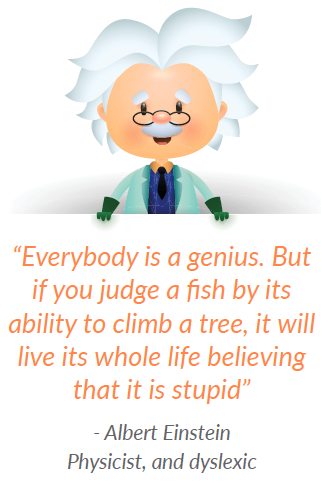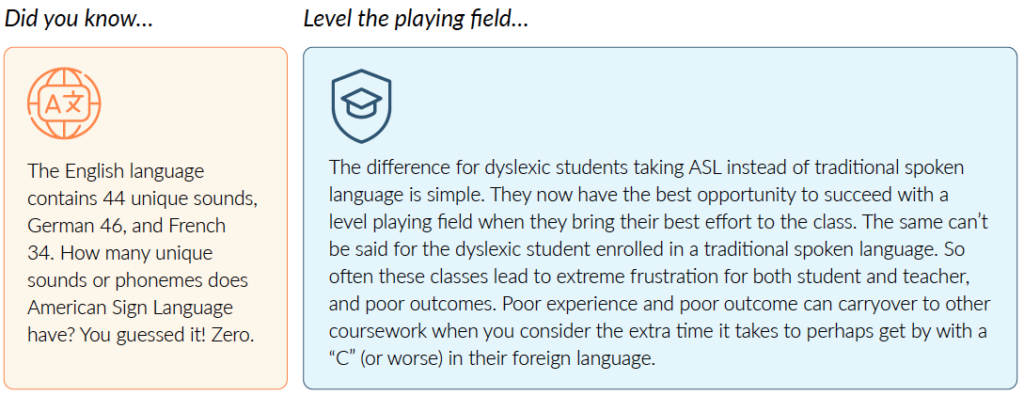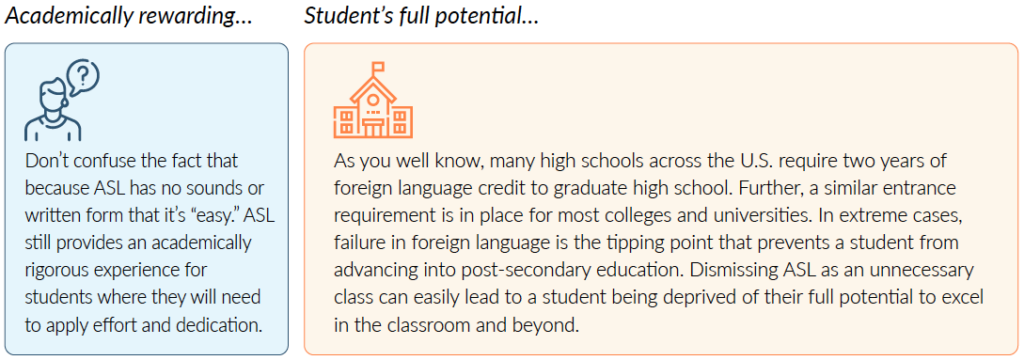In today’s educational landscape, where equity and inclusion take the forefront, American Sign Language (ASL) emerges as a beacon of hope, particularly for students battling dyslexia. At ASL Virtual Academy, we’re committed to nurturing an environment that acknowledges and supports all kinds of learners, including those with dyslexia. Our ASL courses are uniquely positioned to aid dyslexic students in their quest for acquiring a new language, thereby bolstering their confidence and learning capabilities.

Embracing The Visual Advantages of ASL
Unlike traditional spoken languages, ASL’s primarily visual nature makes it a suitable and engaging option for dyslexic learners. The intricacies of reading and writing, often challenging for those with dyslexia, are bypassed in favor of a language that speaks through motions and expressions. Our curriculum at ASL Virtual Academy capitalizes on this by delivering content predominantly through videos, reducing reliance on text and making learning accessible and inviting.
Immersive Reader: A Gateway to Accessibility
One of the standout features of our curriculum is the Immersive Reader. This tool breathes life into written directions by vocalizing them, thus diminishing the text barrier dyslexic students often face. The option to have directions read aloud ensures that instructions are clear, allowing students to focus on the essence of ASL without being bogged down by textual complexities.


Fingerspelling and The Manual Alphabet: A No-Penalty Zone
ASL includes fingerspelling, where words are spelled out letter by letter. It’s a crucial component of the language, bridging the gap for words that lack specific signs. Recognizing the potential challenges this poses for dyslexic learners, ASL Virtual Academy doesn’t penalize for misspelled words in fingerspelling exercises. Our goal is understanding and communication, not perfection. This approach encourages students to engage with ASL openly, without fear of error.
Beyond Traditional Assessment: Learning ASL Authentically
In many language courses, both online and in-person, research papers serve as a common assessment tool. However, considering the visual and interactive essence of ASL, coupled with the challenges dyslexic students face with written assignments, our academy chooses a different path. We focus on practical knowledge of ASL, its grammar, and the rich tapestry of Deaf culture — all without the need for research papers. By doing so, we create a learning trajectory that is both meaningful and effective, ensuring students gain authentic language skills applicable in real-world settings.
The Linguistic Structure of ASL: An Ally for Dyslexic Learners
Languages like Spanish or French require learners to navigate through complex verb conjugations, a daunting task that can overwhelm anyone, particularly those with dyslexia. ASL, however, presents a simplified linguistic structure where tense is not expressed on the verb, sidestepping the need for multiple verb variations. This aspect of ASL grammar significantly reduces the cognitive load for dyslexic students, enabling them to focus on communication rather than memorization.
Conclusion: ASL as a Robust Option for Dyslexic Learners
At ASL Virtual Academy, we firmly believe in the power of ASL not just as a language, but as a tool for empowerment and inclusion. Our tailored approach to teaching ASL caters to all students, making it an ideal choice for dyslexic learners seeking to explore a new language. Through supportive tools like the Immersive Reader, a focus on video-based learning, and an assessment strategy that values practical knowledge over textbook perfection, we offer a learning environment where students can thrive without barriers.
We invite students, parents, and educators to experience the unique advantages of learning ASL through our academy. Together, let’s embark on a journey of discovery, inclusivity, and linguistic achievement that transcends traditional learning barriers.

